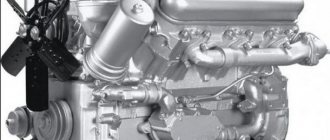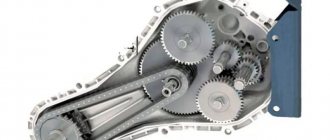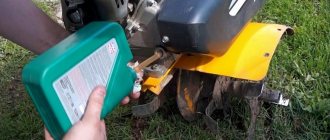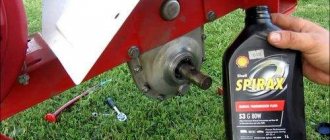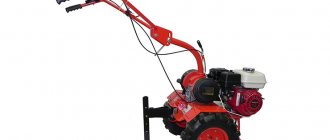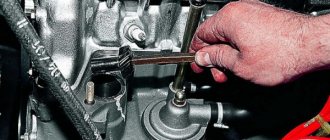The task of the gearbox in a car is transmit and distribute torque
from the engine to the wheels. This function is realized through the interaction of rotating toothed gear shafts, differing in the number of teeth. Depending on the ratio of the number of teeth in the gears, the gearbox can either reduce or increase torque, depending on the design features of the car.
Obviously, the constant interaction of metal elements in the absence of lubrication would be extremely short-lived. transmission oil plays a significant role in the operation of the gearbox.
. It allows for optimal contact of gear teeth with each other, reduces metal abrasion and, as a result, increases the life of the gearbox.
Typically performed simultaneously with changing the transmission
(and the oil itself coincides with the transmission oil), and its timely maintenance is no less important for the gearbox than for the gearbox. For most cars, it is optimal to change the oil in the gearbox during seasonal maintenance of the car (when switching from winter to summer operation and vice versa).
When is it necessary to change the oil in the gearbox?
Conventionally, there are three main reasons why it is important to change the oil in the gearbox:
- during intensive operation, thermal and oxygen exposure leads to the decomposition of hydrocarbons that make up the transmission oil, which leads to metal corrosion
; - over time, the viscosity of the oil decreases, its properties deteriorate and, as a result,
of the gear teeth of the gearbox increases - wear products
gradually accumulate in the oil , which also impairs its lubricity and accelerates wear.
There are other situations in which changing the oil in the gearbox is recommended regardless of mileage.
As a rule, the oil is changed when purchasing a second-hand car.
, if you do not have reliable data about the previous oil change (for example, in the form of an entry in the service book). Otherwise, there is a high risk of significantly exceeding the recommended replacement interval if the previous owner misleads you.
In addition, the oil is changed after major repairs
relevant components of the car (and, of course, after major repairs). Moreover, in this case, a second oil change is required after a break-in period (after 2-3 thousand kilometers, as on a new car).
Design features of gearmotors for variable-frequency electric drives
Industrial oil i-40: characteristics, application, GOST
Gearmotors for variable-frequency electric drives differ in the type of electric motor and the type of fan (pump) for cooling the gearbox.
Most general industrial motors will operate normally when regulated in the 35-50 Hz range. This also applies to gearboxes with lubrication from a pump connected to the gearbox shaft or gearboxes with an impeller on a high-speed shaft. But with a larger control range, it all depends on the duration of operation at frequencies below 35 Hz and the control range. There will be a difference for both the gear part and the electric motor. At duty cycle = 25% and below, the electric motor will still be supplied with 5 Hz or 50 Hz, it will have time to cool down. But if the duty cycle is more than 25%, then at a rotation speed below 300-360 rpm, the engine will overheat and may fail. In any case, at a frequency of less than 35 Hz, the temperature of the electric motor of the gearmotor must be controlled, and at frequencies less than 1 Hz, the speed must also be controlled.
The nature of the gearmotor load also plays an important role. If it is a fan (impeller) or a pump, then this is one thing, but if it is a ball mill, then another. The largest control range without additional options and conditions is obtained for fans and pumps.
Things are a little different with the gearbox lubrication pump connected to the gearbox shaft. When the shaft speed decreases, the pressure and consumption of lubricant (oil) decreases, and under certain conditions, lubricant is not supplied at all or is supplied at 1 drop per minute, which leads to overheating of bearings and gears. In such cases, a forced lubrication system with an electric pump is needed.
STC "Reductor" will help you install such a system on your gearbox, geared motor. Or will replace it with a new one.
Another feature of a variable frequency drive is that you can connect a conventional geared motor (with a three-phase electric motor) to a single-phase network without loss of power. The same applies to a 380-volt electric motor when connected to a 660-volt network. Here the frequency converter replaces the soft starter, the transformer, and, in fact, the frequency converter. But the frequency converter in this case is selected based on current. And it turns out that a gearmotor with AIR112M4 can be connected to a 660 volt network. If you need to connect a 400Hz electric motor to a 50Hz network, then you cannot do without a frequency converter.
Another feature of gearmotors with variable frequency drives is the requirement for independent power supply to the brake and synchronization of its activation with the activation of the electric motor of the gearmotor. Synchronization is especially important in lifting equipment.
Frequency of oil change in the gearbox.
Determine frequency
The easiest way to change the oil in the gearbox of your particular car is by studying the operating instructions.
In the absence of one, you can rely on standard recommendations. As a rule, for cars with manual transmission
the recommended replacement interval is
50-60 thousand kilometers
.
For cars with automatic transmission
, the mileage will be approximately half as long and will be
25-30 thousand kilometers
.
It is worth considering that the frequency of replacement depends on the operating conditions of the vehicle. In “difficult” conditions, changing the oil in the gearbox should be done much more often
.
To conditions that shorten the oil change interval
in the gearbox, include:
- regular transportation of large loads, towing trailers or other vehicles;
- driving on dirt country roads, driving with frequent slipping, driving on loose snow;
- driving short distances with frequent braking and stopping (as a rule, this mode is typical for any metropolis).
When purchasing a new car, the manufacturer or dealer often notes the need for the first oil change after 2-3 thousand kilometers.
mileage Such a short period is really justified. During initial operation, intensive grinding of all vehicle components occurs; this process is inevitably accompanied by a significant formation of wear products. For subsequent long-term trouble-free operation of the car, the oil must be changed after the first couple of thousand kilometers of running.
Lubrication and repair
The shaft seal
is replaced if it is damaged or its function deteriorates.
Replacing lubricant
– gearboxes are equipped with synthetic lubricant as standard. Filling with mineral oil is only after agreement with the customer. Change mineral oil for the first time after 400 hours of operation, and then every 4000 hours of operation.
Synthetic and mineral lubricants are prohibited
to mix.
When changing the brand or type of lubricant, the gearbox must be thoroughly flushed. Table 12.1 Lubrication frequency - hours
Temperature (оС)
Load type Mineral oil Synthetic oil NOTE: * size 030–090 supplied with filler
60 constant 4000
long-term
60 intermittent 6000 60 constant 2000 * size 110–150 supplied with filler
60 intermittent 4000
Cleaning -
Drain the lubricant and wash the gearbox with a product that
does not affect
the rubber cuff (seal) of the shaft and the varnish. Dry the gearbox and fill it with oil (see table 7.2.).
It is recommended to discuss changing the type of lubricant with the manufacturer.
| Oil type Ambient temperature environment Manufacturer | Mineral oil | |
SHELL | OMALA EP 220 | OMALA HD 220 |
| ESSO | SPARTAN EP 320 | GLYCOLUBE 220 |
| B.P. | ENERGOL GR-XP 220 | ENERSYN GP-XP 220 |
| IP | MELLANA 220 | TELESIA 220 |
| MOBIL | MOBIL GEAR 630 | GLYCOIL 30 |
| OPTIMOL | OPTIGEAR BM 220 | OPTIFLEX A 220 |
| PARAMO | PARAMOL CLP 220 | |
| OMV | GEAR HST 220 | GEAR PG 460 |
| CASTROL | OPTIGEAR 220 | OPTIFLEX 220 |
| TOTAL | CARTER EP/HT 220 |
Table 7.2 Lubricant quantity
| NMRV | 030 | 040 | 050 | 063 | 075 | 090 | 110 | 130 | 150 |
| B3 | 0,042 | 0,081 | 0,153 | 0,3 | 0,58 | 1,02 | 3,02 | 4,55 | 6,0 |
| AT 8 | 2,25 | 3,35 | 5,0 | ||||||
| B6,B7 | 2,55 | 3,55 | |||||||
| V5,V6 | 3,02 | 4,55 | 6,0 |
Mounting positions.
Do-it-yourself oil change in the gearbox
When changing the oil in the gearbox on your own, you need to pay attention to several nuances.
On most cars, changing the oil in the gearbox is not a labor-intensive procedure (unlike repairing or replacing the gearbox itself), but it is optimal to perform it in an inspection pit or overpass
. This will allow you to install the car with the possibility of later overhanging the wheel to wash the gearbox.
The oil is drained while the engine is warm, so be careful when working to avoid burns.
, since the oil temperature is very high. In this case, it is important to allow the oil to drain completely, since the heaviest suspensions remain in the thick sediment that drains last.
On most vehicles, the drain plug design contains a magnetic part that attracts metal residue. Therefore, when changing the oil, it is important to also flush the drain plug.
If, upon external assessment, the drained oil looks heavily contaminated, it is advisable to additionally flush the system
special washing liquid. Its density is significantly lower than conventional oil, which allows you to literally wash away any remaining contaminants deposited on the working surfaces of the gearbox.
After draining and cleaning, you can fill the gearbox with fresh oil.
As a rule, the oil in the gearbox is replaced with oil similar to that previously used, recommended by the car manufacturer.
In some cases, a car owner who wants to change the brand of oil used can use compatibility tables offered by oil manufacturers. But, of course, it is most effective in this case to seek advice from specialists.
Also, during maintenance, in addition to assessing the condition of the oil itself, it makes sense to pay attention to the condition of the seals
gearbox, since oil can leak out of the gearbox through them.
Why do they pour m
What about the rear axle gearbox? Timely filling of oil fluid into the rear axle gearbox is necessary to improve the interaction of unit parts and extend their service life. Typically, automobile components break down due to wear and tear and poor maintenance.
Fault prevention makes it possible to prevent the occurrence of various problems in the unit. You need to understand how the oil is changed in the transfer case and rear gearbox, and be able to choose what kind of oil to pour into the rear axle gearbox.
Motor oil for walk-behind tractor engine
When purchasing a walk-behind tractor, it is always accompanied by instructions for its trouble-free operation, in which the manufacturer gives recommendations and sets the frequency of maintenance, the class of oil fluid used, etc. To avoid premature repair or replacement of the engine, you must strictly adhere to the requirements of the manufacturer.
Main purpose of lubricants:
- Reduced friction force.
- Heatsink.
- Protection of the internal surface of power units from soot and slag deposits.
- Reduced engine noise.
For a technologically correct choice of lubricant, it is necessary to take into account that any brand of motor oil for a walk-behind tractor is designed for certain operating conditions and is selected based on the climatic characteristics of the region and the magnitude of mechanical loads.
Depending on these characteristics, the required viscosity indicator is selected, which is necessary for the high-quality operation of all mechanisms:
- summer (example: SAE 20);
- winter (SAE 10W);
- all-season (10W-30).
In addition to seasonality, the functional purpose of motor oil for a walk-behind tractor is influenced by its base and the type of modifying additives. Based on the production method, lubricants are divided into the following categories:
- mineral;
- synthetic;
- semi-synthetic.
Another feature of lubricants is their purpose for a specific type of engine: gasoline, diesel, two- or four-stroke.
Motor oil for a gasoline engine of a walk-behind tractor
For walk-behind tractors on which a gasoline engine is installed, lubricants are provided with the index S and the subsequent letter designation of the degree of mechanical loads:
SA – provides for engine operation in moderate operating mode;
SB – average level of mechanical loads;
SC – for engines produced before 1967;
SD - for engines equipped with a crankcase gas recirculation system - PCV;
SE – units 1970–1980;
SF – 1980–1988:
SH – for all modern mini tractors.
Class SB is characterized by high antioxidant and anti-corrosion properties.
SF has good non-stick properties, especially when using lubricants in two-stroke engines.
Motor oil for a diesel engine of a walk-behind tractor
Diesel engine oil can be divided into the following categories (API):
CJ–4 – designed for powerful units operating in extreme conditions. The brand is distinguished by high non-stick qualities and low content of sulfur and phosphorus inclusions (04–0.12%).
CI-4 – for engines with moderate operating requirements. Characterized by high dispersing and antioxidant properties.
CH-4 – for four-stroke units operating on any brand of diesel fuel.
CF-2 – oil for MG tractors with two-stroke engines. Well protects mechanism parts from premature wear.
CA – for walk-behind tractors running on diesel fuel with low sulfur content. It has high non-stick characteristics.
CB is a lubricant with good anti-corrosion properties.
CC - liquid is intended for lubrication of powerful engines operating in difficult climatic conditions.
Oil for four-stroke air-cooled walk-behind engines
Motor lubricants for four-stroke walk-behind tractors must meet the following requirements:
- Low kinematic viscosity.
- High anti-friction and anti-wear qualities.
- Thermal conductivity.
- Non-stick properties with good cleaning properties, facilitating easy removal of carbon deposits from the walls of engine cylinders.
- High heat resistance with negative coking ability, which prevents sticking of piston rings.
How does the rear axle work, why does it wear out?
The rear axle gearbox (transfer case) is a unit connected to each other that transmits torque from the power unit to the wheels. The gearbox is subjected to different loads, the degree of which depends on the speed. Because of this, friction appears in it, which has a destructive effect on its condition. In order to compensate for this effect, a special lubricant is used to soften the movement of moving parts and ensure their integrity. Changing the oil in the gearbox is an important procedure that should not be neglected.
The oil in the rear axle needs to be changed approximately once every thirty-five thousand kilometers.
This replacement frequency is recommended by well-known car manufacturers. There are certain signs that, if detected, must immediately replace the consumable (having previously determined what kind of oil to pour into the rear axle gearbox). These include:
- reducing the amount of motor oil;
- the appearance of gray dust in the lubricant;
- changing the shade of the consumable.
The influence of harmful factors on the rear axle of the car
A decrease in the amount of lubricant may be due to a deterioration in its technical characteristics, leading to a change in the viscosity index. Also, the level of consumables may decrease due to normal leaks that occur due to increased loads.
The appearance of gray dust is a sign of worn parts. The outer layer of spare parts wears off over time and precipitates. Once in the car oil, the sediment begins to circulate throughout the lubricant complex. If it ends up on an important part, its holes may become partially blocked. This may cause damage. If this problem is detected, fresh lubricant should be poured into the gearbox immediately. If you find metal particles or shavings in your car oil, it means you need to overhaul the engine and completely replace damaged parts.
A change in the shade of the oil product from gold to black is considered a sign that the lubricant is functionally worn out. Long-term use, high loads, dustiness - all this gradually leads to a deterioration in the performance of the oil. The molecular structure of the petroleum product is disrupted. Such oil is unable to properly lubricate parts.
If you find at least one of the above signs, replace the oil fluid immediately.
You can resort to the services of a car service. Its employees will replace the oil in the transfer case in a short time. You will only need to pay them for the work. If you change the petroleum product yourself, you can save a lot of money (provided the replacement is carried out correctly). However, when changing the lubricant, it is difficult to make such a mistake that could completely disable the vehicle. The most dangerous thing that can happen is that you get burned by the used oil liquid. If you are careful, this will not happen. You can save your money if you know how to fill the rear axle with oil.
Features of using lubricant for plastic gears
Many people believe that if gears are made of plastic, they do not require lubrication. Unfortunately, this often leads to damage and premature wear of the mechanisms. Plastic lubricant should be used for almost all types of plastic gears, as it provides the following functions:
- provides a long service life of plastic gears and prevents premature wear;
- ensures stable operation of mechanisms without interruptions;
- prevents the occurrence of unpleasant noises and squeaks, ensuring virtually silent operation;
- keeps the working surface of rubbing parts intact, without roughness and abrasions;
- prevents deformation of the working elements of gearboxes and the occurrence of cracks;
- protects components from the influence of external factors, especially high and low temperatures.
Even universal formulations cannot guarantee high efficiency. Exposure of plastics to conventional mixtures may have the following effects:
- Under the influence of ordinary lubricant, the plastic loses its strength and small cracks appear on its surface. This quickly leads to damage to the gear teeth, which causes the entire mechanism to fail. Then it will not be possible to restore the gear pairs using lubricant.
- Some types may cause the surface of plastic parts to swell. This leads to the gears jamming, which can lead to breakage of the teeth and the entire assembly as a whole.
- Plastic surfaces have poor adhesion. Because of this, classic lubricant does not adhere to the gears and scatters to the sides during rapid rotation.
- Some types, such as solid oil, act as an abrasive. During operation, gear teeth can wear out before your eyes. This usually renders the parts completely unusable.
- Classic lubricants cannot provide the necessary heat transfer. Plastic gearboxes differ from metal gearboxes in that they become very hot during operation. Conventional oil melts and loses the desired consistency, which leads to overheating of the plastic and changes in its shape and physical properties.
Today, plastic gears are used in various fields:
- computer equipment, especially servers;
- office equipment, including printers and scanners.
- multimedia equipment, the operation of which is based on rotational mechanisms;
- printing equipment, copying equipment and devices for large format printing;
- in some parts of cars;
- cash registers;
- food equipment, including conveyors, mixing and handling equipment.
- kitchen appliances;
- medical equipment;
- children's toys, radio-controlled models of airplanes and cars.
Lubricants for plastic gears intended for medical and food equipment require special attention, since they are subject to not only mechanical requirements, but also hygienic ones.
Which car oil to choose?
What kind of oil should I use? It is possible to use both mineral water and synthetics. Due to its own composition, synthetics resist wear better than mineral water made through petroleum refining, which must be changed frequently. The advantage of mineral oil is its fairly low price. Special additives are added to synthetics, which increase the service life of such motor oil several times. However, the cost of synthetic consumables, especially from well-known manufacturers, is quite high.
Before deciding what kind of oil to pour into the rear axle gearbox, remember that there are also semi-synthetic petroleum products. They are not as expensive as synthetic ones, but they have fairly high technical characteristics (constant viscosity index, excellent lubrication properties). It is not for nothing that semi-synthetics have become so popular among many car owners in the Russian Federation.
An automobile gearbox is a transmission element that receives torque from the crankshaft and transmits it to the center differential. Depending on the type of transmission, there are gearboxes integrated into the gearbox of the front axle (on front-wheel drive models) and the rear axle (on rear-wheel drive models). All-wheel drive models, accordingly, have both gearboxes. Torque is transmitted through the gearbox through gears rotating at a certain frequency. To prevent their abrasion as a result of friction, gear oil is used in the gearbox.
Performance Features
Scientists at the API Institute, operating in the United States, have created a classification that provides a comprehensive assessment of gearbox oils depending on their performance properties. Now it is distributed all over the world. The system provides five categories that indicate the level of quality and application features of products with the corresponding index. In the domestic GOST, the classification is indicated only in the letter designations placed at the beginning of the index.
| Performance properties of transmission oils | |||
| API category | Type | Application | Compliance with GOST |
| GL-1 | Mineral oil without additives | TM1 | |
| GL-2 | Oil containing fatty foods | Industrial equipment | TM2 |
| GL-3 | Oil containing extreme pressure additives | Manual gearboxes, gearboxes and rear axles of trucks | TM3 |
| GL-4 | Oil containing anti-wear, extreme pressure and other additives | Manual gearboxes, gearboxes and rear axles of trucks | TM4 |
| GL-5 | Oil containing anti-wear, extreme pressure and other additives | Passenger car gearboxes and drive axles | TM5 |
When to change
There is no definite period for changing the oil in the gearbox. It is customary to pour new oil into the unit at the same time that other transmission elements are serviced and other transmission fluids are changed. The standard period for transmission maintenance is 45 thousand kilometers, then every 60 thousand kilometers, or every 2 years of vehicle operation.
With intensive use, the period for changing the oil in the gearbox is reduced to 30-35 thousand kilometers. These conditions include:
- transporting heavy loads, towing trailers or vehicles on a cable;
- frequent driving in city mode (start-stop);
- operation in adverse conditions (off-road, snowy roads, etc.).
The user manuals for some models indicate that the first oil change in the gearbox must be done after 1-2 thousand kilometers. The fact is that at this stage the car components undergo grinding in, which is characterized by increased friction and the formation of wear products.
Oil for diesel walk-behind tractor
As with the selection of lubricants for other models of walk-behind tractors, in this case you should also follow the operating instructions and manufacturer’s recommendations. In general, oils for diesel walk-behind tractors are divided into the following:
- CA - for walk-behind tractors subject to low and medium loads. Significantly reduces the formation of bearing corrosion and deposits on engine parts at high temperatures. Not suitable for use in high voltage environments;
- CB - just like the previous type, this oil is intended for low and medium loads. Compared to the CA category, it further reduces the degree of corrosion formation;
- CC - for use in walk-behind tractors subject to medium and high loads, the engines of which are air cooled. Reduces deposits on parts at high temperatures and reduces the risk of corrosion on bearings;
- CD - for air-cooled diesel engines that are designed to operate at high speeds.
How to check oil level and quality
During vehicle operation, the oil in the gearbox loses its viscosity, and subsequently oxidation processes occur as a result of the ingress of heated air due to insufficient tightness of the system. As a result, the oil decomposes and ceases to perform lubricating functions, intense wear of the gears occurs and the gearbox overheats.
Checking the quality and level of the oil is carried out on an overpass or inspection hole - it is important that the surface on which the car stands is absolutely flat. The check is carried out, as they say, “cold”, when all the oil collects in the gearbox housing.
The first step is to unscrew the filler plug using a hexagon. If after unscrewing a certain amount of oil spills out, its level in the crankcase is sufficient. If oil does not flow from the filler hole, then you can check its level by inserting a finger, stick, wire, etc. into the hole. Ideally, the oil level should be no lower than a few millimeters from the lower edge of the filler hole. If the distance is greater, then the oil level is insufficient. You can check the quality of the lubricating fluid by pumping out a small amount of oil using a syringe and assessing its appearance and consistency.
What oil to fill and how much
The gear oil recommended by the manufacturer in the user manual is suitable for filling. If there is no manual, and the car owner is not completely sure which gear oil is suitable, then you need to focus on the API classification and viscosity indicators.
All manufacturers recommend using transmission oils numbered GL-4 or GL-5 on modern cars - these are the fluids that contain the necessary extreme pressure additives. As for viscosity, the choice here depends on the climatic operating conditions. For transmission oil, it is advisable to choose all-season options - it is unlikely that anyone will change the oil in the gearbox for one season. Such products are indexed with double numbering, for example, 75W-90, where the first digit indicates viscosity at low temperatures, and the second viscosity during summer operation. The lower the first number, the lower the temperatures at which the gear oil retains its viscosity. For example, 70W oil can be used at extreme temperatures of -55 °C, 75W - at -40 °C, 80W - at -26 °C, etc.
As for the required volume, for passenger cars with a single axle drive, 1-2 liters of transmission is usually enough. For vehicles with four-wheel drive and dual sump, 3 liters or more may be required. For utility vehicles, the required volume of transmission oil can reach 10-15 liters. Before filling, it is advisable to stock up on additional volume (up to 1 liter), since additional flushing of the gearbox may be necessary.
Classification
According to DIN
According to DIN 51517, the classification and marking of gear oils is as follows.
| Class | Description | Properties |
| 51517-1(C) | Mineral oil without additives | The most affordable product. Compatible with unloaded and lightly loaded systems |
| 51517-2 (CL) | Mineral oil with anti-corrosion and antioxidant additives | Oils with extended shelf life for systems without anti-wear requirements |
| 51517-3 (CLP) | Mineral oil with additional anti-wear additives | Used in mechanisms that require enhanced protection against wear of parts |
According to AGMA
Another generally accepted classification was developed by the American Lubricants Manufacturers Association (AGMA). This specification determines the viscosity of oils for gears and gearboxes. The viscosity ratio according to AGMA and ISO standards is given in the table below.
| AGMA | Corresponding ISO grade | AGMA (EP gear oils) | AGMA (synthetic gear oils) |
| 32 | 0 S | ||
| 1 | 46 | 1 S | |
| 2 | 68 | 2 EP | 2 S |
| 3 | 100 | 3 EP | 3S |
| 4 | 150 | 4 EP | 4 S |
| 5 | 220 | 5 EP | 5S |
| 6 | 320 | 6 EP | 6S |
| 7, 7Comp | 460 | 7 EP | 7S |
| 8, 8 Comp | 680 | 8 EP | 8S |
| 8A Comp | 1000 | 8A EP | — |
| 9 | 1500 | 9 EP | 9S |
| 10 | — | 10 EP | 10 S |
| 11 | — | 11 EP | 11 S |
| 12 | — | 12 EP | 12 S |
| 13 | — | 13 EP | 13S |
According to ISO (gear oil viscosity grades)
The viscosity of gear oils is assessed according to the ISO VG standard. The abbreviation VG stands for viscosity grade, which translated from English means “viscosity grade”. High-quality gear oils meet the requirements of ISO classes from 2 to 1500. ROLF Lubricants GmbH products are presented in the following viscosity range: 68, 100, 150, 220, 320, 460.
Oil change instructions
It is advisable to change the oil after a short trip - this will allow the oil to warm up and become less viscous. To carry out the operation, it is again advisable to use a lift or inspection hole - this will make access to the gearbox easier.
- The first step is to drain the old transmission oil. To do this, unscrew the drain plug using a hexagon. Used oil must be drained into a prepared container.
- When draining, you should pay attention to the consistency and appearance of the used fluid - if there are impurities in it in the form of metal inclusions, then before filling the new transmission you will have to flush the gearbox.
- Then you need to remove the plug from the filler hole of the gearbox housing using a hexagon.
- To pump new oil into the gearbox, you can use a large medical syringe or a lever pump (grease pump).
- The gearbox must be filled with oil until it overflows. When using a grease gun, this will take 10-15 minutes; when using a syringe, it will take a little longer.
- After filling, you need to wipe off any remaining oil from the gearbox and place the filler plug on the sealant.
Flushing the gearbox
To flush the gearbox, special flushing fluids are used (Loctite 7840, DS Lavado, etc.). As an alternative, you can use a mixture of gear oil (70%) and kerosene or diesel fuel (30%).
This mixture must be poured into the gearbox housing using a grease gun or syringe. Then you should hang the wheels of the drive axle using supports, start the engine and engage first gear, simulating a trip. In this mode, you need to let the engine run for 10-15 minutes, allowing the flushing mixture to clean the gearbox. After this, the mixture should be drained in the same way as used transmission oil was drained.
While changing the transmission oil in the gearbox, you can at the same time assess the condition of other parts and consumables, for example, axle seals. It is the wear of the seals that can cause the oil level in the gearbox to be low. If leaks are detected in the seals, they should be replaced with new ones.
To keep your car running smoothly, it requires constant care and maintenance. Of all the technical procedures, changing the oil in the rear gearbox is not the most frequent, but it is extremely important. A gearbox is a special gear mechanism connecting two axle shafts, which is responsible for converting engine power and transmitting it to the wheels. It allows the wheels to rotate at different speeds. Despite the complex design of the gearbox, changing the oil in the gearbox is quite simple if you have experience and skill.
Technical data:
Each worm gearbox or gearmotor is equipped with a nameplate:
TYPE:
model
S N:
factory number
I:
transmission ratio
Model NMRV
worm gear motor with hollow input shaft in combination with an IEC motor mounting flange. To achieve a compact design, the electric motor model IM B14 (IM 3681) is used whenever possible.
Model
DRV:
a combination of worm gearboxes used to achieve large gear ratios.
Component material:
housing sizes 030 – 090 aluminum
- housing sizes 110 – 150 cast iron
- feet and flanges sizes 030 – 090 aluminum
feet and flanges sizes 110 – 150 – cast iron
- worm - steel
- worm wheel – bronze
- lubricant – synthetic oil
EXAMPLE OF ORDERING DESIGNATION: NMRV- 040 — 30 — 47 -B3 — 0.37
- NMRV -
worm gear motor - 040 —
gear motor size - 30 —
gear ratio - 47 –
rotation speed of the output shaft of the gearmotor, [rpm] - B 3 -
version/method of installation of the geared motor - 0,37 —
motor power
Permissible radial cantilever load on the output shaft (N).
| i | n2 | RV030 | RV040 | RV050 | RV063 | RV075 | RV090 | RV110 | RV130 | RV150 |
| 5 | 280 | 599 | 1149 | 1586 | 2062 | 2428 | 2687 | 3389 | 4433 | 5319 |
| 7.5 | 186 | 691 | 1325 | 1829 | 2378 | 2799 | 3098 | 3908 | 5112 | 6134 |
| 10 | 140 | 758 | 1454 | 2007 | 2609 | 3072 | 3400 | 4288 | 5610 | 6732 |
| 15 | 94 | 868 | 1665 | 2298 | 2988 | 3518 | 3893 | 4910 | 6424 | 7708 |
| 20 | 70 | 954 | 1829 | 2525 | 3283 | 3665 | 4277 | 5395 | 7057 | 8460 |
| 25 | 56 | 1033 | 1981 | 2735 | 3556 | 4187 | 4633 | 5844 | 7645 | 9170 |
| 30 | 47 | 1086 | 2087 | 2881 | 3745 | 4410 | 4880 | 6155 | 8052 | 9660 |
| 40 | 35 | 1204 | 2309 | 3188 | 4145 | 4880 | 5401 | 6812 | 8912 | 10690 |
| 50 | 28 | 1296 | 2485 | 3431 | 4461 | 5252 | 5812 | 7331 | 9590 | 11590 |
| 60 | 24 | 1381 | 2649 | 3658 | 4756 | 5599 | 6196 | 7815 | 10224 | 12260 |
| 80 | 18 | 1516 | 2907 | 4014 | 5218 | 6144 | 6799 | 8576 | 11219 | 13540 |
| 100 | 14 | 1638 | 3142 | 4338 | 5639 | 6639 | 7348 | 9268 | 12124 | 14000 |
How often does the gearbox oil need to be changed?
How often does the rear gearbox oil need to be changed? It all depends on the car model and operating conditions. Experienced auto mechanics will say that under standard operating conditions, changing the oil in the gearbox is necessary on average every 40-60 thousand kilometers.
During intensive use of the vehicle, over time, slow oxidation and decomposition of the filled oil occurs in the gearbox housing. The reason for this phenomenon is the entry of heated air into an insufficiently sealed system. The inevitable decrease in oil viscosity during operation also has a negative impact.
Since the transfer case contains rubbing elements, wear products inevitably appear in it over time. If you do not change the oil in the transfer case in a timely manner, its service life will be reduced. The oil loses performance and fine particles increase gear wear.
8.3. Recommended oil brands for wave gears
The designation of industrial oils consists of four characters, each of which means: the first
(I) - industrial,
the second -
belonging to the group according to purpose (G - for hydraulic systems, T - heavily loaded units), the third
belonging to the group according to performance properties (A - oil without additives, C - oil with antioxidant, anti-corrosion and - anti-wear additives, D - oil with antioxidant, anti-corrosion, anti-wear and extreme pressure additives),
fourth
(number) - kinematic viscosity class.
From grease lubricants
the most commonly used are CIATIM-201, Litol-24, Uniol-2 (Table 19.40).
Permissible levels of immersion of spur gear wheels
in
an oil bath (Fig. 8.1): hm(2m…0.25d2). Here m is the engagement module. The smallest depth is considered to be equal to two engagement modules, but not less than 10 mm. The maximum permissible immersion depth depends on the peripheral speed of the wheel. The slower the wheel rotates, the greater the depth it can be immersed.
How often to change
There are several different types of transfer cases, and depending on the type of mechanism, the frequency of replacement can vary significantly. Usually this information is contained in the technical documentation for the car and varies in the range from 50 to 100 thousand kilometers.
In addition, operating conditions affect the service life. The transfer case of a car that drives on public roads experiences much less load than that installed on a car that constantly moves off-road.
Example of order designation
UD-RV – 110 – 100 – 70 – B6 – 2.5
- UD-RV – unit type,
- 110 – standard size, selected from 9 options in the range 030-150,
- 100 – gear ratio “i”,
- 70 – n time output shaft (rpm),
- B6 – mounting option,
- 2.5 – P electric motor. kW.
| Standard size | d | d1 | d | b | l | t |
| RK – 500 | 150 m 6 | 150 | M20 | 32 | 200 | 141 |
Dimensions of low-speed shafts of RK-500 gearboxes - in the form of a gear coupling
| Standard size | Engagement | L, not less | l | K | B | d (limit shutdown by F7) | d1 (limit trip on e8) | ||
| m | z | b | |||||||
| RK-500 | 8 | 54 | 50 | 73 | 22 | 40 | 78 | 190 | 260 |
Assembly options
| With shaft ends for couplings, as part of a gear coupling | With shaft ends for couplings |
How to choose
Two types of fluid are poured into the transfer case: transmission oil or ATF fluid.
On cars with an automatic transmission, ATF is usually filled into the transfer case, and on cars with a manual transmission, the transmission is filled. In this case, often the liquids must match or be completely compatible.
This is due to the fact that usually the connection between the transfer case and the gearbox is made by a single shaft, or one is attached to the body of the other. When mixing liquids, this will avoid the formation of emulsions, foaming and other side effects.
For most modern cars with a transfer case, the manufacturer recommends using GL-5 class gear oils. They protect hypoid gears well, are designed to operate in the most heavily loaded mechanisms and contain extreme pressure additives.
The viscosity characteristics of oils play an important role. Let's look at the meaning of the numbers using 80W90 oil as an example:
- 80 – viscosity at low temperatures
- W – all-season
- 90 – viscosity at high temperatures
If ATF is used, it is better to fill in the original fluid recommended by the manufacturer, or an analogue that has the appropriate approvals.
Common formulations
To lubricate plastic gears, it is best to choose compounds from global brands that have specialized in developing compounds for many decades. Among the most common are the following:
- Silicon Fett. A universal lubricant for plastic that has excellent adhesion and water-repellent properties. Can operate in a wide temperature range, both low and high. When working at high speeds, it does not scatter, but holds well on the surface of the plastic. It has a long service life, it does not require replacement until it practically dries out, which happens after several years of operation. It can be used in mechanisms that combine plastic with metal or rubber. Cannot be used for food processing equipment or in open gearboxes. An analogue is Silicot silicone grease.
- Thermoflex Spezialfett. It is also a universal one, which can be equally used not only in plastic mechanisms, but also in metal ones. It differs in that it retains its properties and structure at low temperatures. But it is not suitable for tall people, as it begins to melt and spread, as a result of which the protective film is destroyed and friction increases. Also cannot be used for food processing equipment.
- SI-180. Domestic silicone grease. Sold in small volume syringes, as it is used to lubricate small mechanisms. The white grease adheres well to the plastic surface without changing its properties at high temperatures. It does not belong to the food group.
- Lubricants for food equipment. This is a separate group, the price of which is much higher than usual, and is used in household equipment and in production. The most popular is OKS 1110, which is used not only for lubrication, but also for sealing. You can also highlight Loctite food-grade lubricant for plastic and rubber, made on a silicone basis. The service life of plastic mechanisms directly depends on their care. Choosing a high-quality lubricant will allow you to achieve optimal, uninterrupted operation and save money on repairs.
What and how much to fill
The table below will allow you to select oil by car brand and find out how much is required.
| Automobile | Oil | Volume (l) |
| AUDI | ||
| audi q7 (audi q7) | G052162A2, 4014835712317 Ravenol ATF 5/4 HP | 0,85 |
| BMW | ||
| BMW x5 e53 (bmw x5 e53) | BMW 83 22 9 407 858 "ATF D-III, ATS-500 83220397244 | 1 |
| BMW x5 e70 (bmw x5 e70) | 83 22 0 397 244, Multi DCTF, Motylgear 75W80 | 1 |
| BMW x3 e83 (bmw x3 e83) | 83229407858 | 1 |
| BMW x3 f25 (bmw x3 f25) | BMW Verteilergetriebe 4WD TF 0870 (83 22 0 397 244) | 0,6 |
| GAS | ||
| gas 66 | TAp-15V, TSp-15K, TSp-Mgip, 80W90 Gl-4 | 1,5 |
| GREAT WALL | ||
| Great wall hover | Dexron III | 1,6 |
| JEEP | ||
| Jeep Grand Cherokee | Mopar 05016796AC | 2 |
| INFINITI | ||
| Infiniti fx35 (Infiniti fx35) | Nissan Matic D - KE908-99931 | 2 |
| KAMAZ | ||
| KAMAZ 43118 | TSp-15K | 5,4 |
| KIA | ||
| Kia Sorento | Dexron II, III (IDEMITSU Multi ATF, GT ATF TYPE Multi Vehicle IV) | 2 |
| Kia Sorento 2 (kia sorento 2) | Castrol Syntrax Universal Plus 75W90, RAVENOL TGO 75W90 | 0,6 |
| Kia Sportage 1 | API GL-5 SAE 75W-90 | 1 |
| Kia Sportage 2 | 75W90 GL-5 (Mobil Mobilube HD 75W90 GL-5, Castrol 4008177071768 "Syntrax Longlife 75W-90) | 0,8 |
| Kia Sportage 3 | HYPOID GEAR OIL API GL-5, SAE 75W/90 | 0,6 |
| Kia Sorento TOD | Shell Spirax S4 ATF HDX, MOBIL ATF LT 71141 | 2 |
| Kia Sorento Part-Time | ATF Dexron III | 2 |
| RANGE ROVER | ||
| Land Rover Discovery 3 | SAF-XO 75W-90, Syntrax Longlife 75W-90 | 1,5 |
| Land Rover Discovery 4 | Tl7300-Shell Tf0753 | |
| Land Rover Freelander 2 | API GL5, SAE 90 | |
| Land Rover Defender | 75W-140 GL-5 | 2,3 |
| LEXUS | ||
| Lexus rx300/330 (Lexus rx300/330) | 85W-90, CASTROL TAF-X 75W-90 | 1 |
| MERCEDES | ||
| Mercedes GLK (Mercedes-Benz GLK-Class) | dispenser in a box | |
| Mercedes ml 163 (mercedes ml 163) | 236.13 #A001989230310, Motul Multi ATF | 2 |
| Mercedes w163 (Mercedes-Benz w163) | A 10 | 1,5 |
| Mercedes w164 (Mercedes-Benz w164) | A0019894503 | 0,5 |
| MAZDA | ||
| mazda cx 5 | GL-5 80W-90, MOBIL Mobilube HD 80w-90 GL-5 | 0,5 |
| mazda cx 7 | 80W90 API GL-4/GL-5 | 2 |
| MITSUBISHI | ||
| Mitsubishi Pajero Sport | Castrol TAF-X 75W-90 | 3 |
| Mitsubishi Outlander 3, xl (mitsubishi outlander 3, xl) | 80W90 GL-5, 75W90 GL-5 | 0,5 |
| mitsubishi l200 (mitsubishi l200) | GL-3 75W-85, GL-4 75W-85 | 2,5 |
| Mitsubishi Pajero 2 (mitsubishi pajero 2) | 75W85GL4 | 2,8 |
| Mitsubishi Pajero 3 (mitsubishi pajero 3) | GL-5 80W-90, Castrol Syntrans Transaxle 75W-90 | 3 |
| Mitsubishi Pajero 4 (mitsubishi pajero 4) | ENEOS GEAR GL-5 75W-90 | 2,8 |
| Mitsubishi Montero Sport | Castrol TAF-X 75W-90 | 3 |
| Mitsubishi Delica | 75W90 Gl-4 | 1,6 |
| NIVA | ||
| Niva 2121/21213/21214 (VAZ 2121/21213/21214) | Lukoil TM-5 (75W-90, 80W-90, 85W-90), TNK Trans Gipoid (80W-90), Shell Transaxle Oil (75W-90) | 0,8 |
| NISSAN | ||
| Nissan x trail t31 (nissan x trail t31) | Nissan Differential Fluid (KE907-99932), Castrol Syntrax universal plus 75w90 GL-4/GL-5 | 0,35 |
| Nissan Qashqai | NISSAN Differential Fluid SAE 80W-90 API GL-5 | 0,4 |
| Nissan Pathfinder r51 (Nissan Pathfinder r51) | Nissan Matic-D, Dexron III | 2,6 |
| Nissan Terrano | SAE75W90 GL-4, GL-5 | 2 |
| Nissan Teana | GL-5 80W90 | 0,38 |
| Nissan Murano z51 (Nissan murano z51) | Genuine NISSAN Differential Oil Hypoid SuperGL-5 80W-90 | 0,3 |
| OPEL | ||
| Opel Antara | GL-5 75W90 | 0,8 |
| Opel Mokka | GM 93165693, MOBILUBE 1 SHC 75W-90, Motul GEAR 300 75W-90 | 1 |
| PORSCHE | ||
| Porsche Cayenne Hang-on | Shell TF0870, RAVENOL Transfer Fluid TF-0870 | 0,9 |
| Porsche Cayenne Torsen | Castrol BOT 850, Burmah BOT 850 | 0,9 |
| RENAULT | ||
| Renault Duster 2.0 4x4 (renault duster 2.0 4x4) | Elf TransElf Type B 80W90 | 0,75 |
| Renault Koleos | Elf TransElf Type B 80W-90, Total Transmission rs fe 80w-90 | 1,5 |
| SUZUKI | ||
| Suzuki Escudo | SAE 75W-90, 80W-90 API GL-4 | 1,7 |
| Suzuki Grand Vitara | 75W-90 API GL-4, SAE 80W-90 API GL-5 | 1,6 |
| Suzuki CX4 | TAF-X | 0,6 |
| SSANGYONG | ||
| SsangYong Kyron (automatic transmission) | Dexron IID, III | 1,3 |
| SsangYong Kyron manual transmission | 80W90 API GL-4/GL-5 | 1,4 |
| SUBARU | ||
| Subaru Forester | no transfer case, reduction gear in the box | |
| TOYOTA | ||
| Toyota Hilux | API GL3 75W-90 | 1 |
| Toyota Land Cruiser Prado 120/150/200 | GL-5 75W90 Toyota Gear oil | 1,4 |
| toyota rav 4 | Toyota Synthetic Gear Oil API GL4/GL5, SAE 75W-90 | |
| Toyota Highlander | LT 75W-85 GL-5 TOYOTA | 0,5 |
| UAZ | ||
| UAZ Patriot | SAE 75W/90 according to API GL-3, TSp-15K, TAP-15V, TAD-17I | 0,7 |
| UAZ 469 | TAD-17, 80W90 Gl-5, 85W90 GL-5 | 0,7 |
| UAZ Hunter | SAE 75W/90 according to API GL-3 | 0,7 |
| URAL | ||
| Ural 4320 | TSp-15K | 3,5 |
| FORD | ||
| Ford explorer 2013 (ford explorer 2013) | Motul 75w140 | 0,4 |
| ford kuga | SAE 75W-90 | 0,5 |
| ford kuga 2 | SAE 75W140 | 0,4 |
| Ford Maverick | SAE 75W140 | 2 |
| Ford Explorer 5 | SAE 75W140 (Castrol Syntrax Limited Slip 75w140) | 0,4 |
| VOLKSWAGEN | ||
| Volkswagen Amarok | G052533A2, Castrol Transmax Z | 1,25 |
| Volkswagen Touareg | VAG G052515A2, Castrol Transmax Z | 0,85 |
| Volkswagen Tiguan | G 052 145 S2 | 1 |
| HYUNDAI | ||
| Hyundai ix35 (Hyundai ix35) | 75W90 | 1 |
| Hyundai Santa Fe 2.7 (Hyundai Santa Fe 2.7) | Shell Spirax AXME 75W90 | 1 |
| Hyundai Tucson | 80W90 GL-4/Gl-5 (Shell Spirax S3 AX 80W-90), 75W90 GL-5 (Сastrol Syntrax Universal 75W-90) | 0,8 |
| HONDA | ||
| Honda CR-V | transfer case combined with gearbox | |
| CHEVROLET | ||
| Chevrolet Niva | 80W-90 GL-4, 75W-90 | 0,8 |
| Chevrolet Captiva | GL-5 75W90 | 0,8 |
| Chevrolet Tahoe | Dexron VI (GM Dexron 6, Spirax S3 ATF MD3, Chevron ATF MD3, AC Delco auto trak II) | 2 |
| Chevrolet TrailBlazer | GM Auto-Trak II | 2 |
Check level
On most cars, inspection windows are not provided to check the oil level in the transfer case. Level control and replacement is carried out through the filler hole.
To check, you need to place the car on a flat surface and unscrew the filler bolt, or the control bolt, if any. Usually they are made with a quad or hexagon, or with a wrench.
A normal level is just below the fill/check hole.
The need for replacement is determined by taking a small amount of oil. This can be done using a syringe with a flexible tube attached to the end. Black, cloudy, with traces of wear and tear, must be replaced.
How to change
The replacement procedure itself is simple, but is often complicated by the fact that access to the filler hole is difficult. A lift, inspection pit or overpass is also required.
Some car enthusiasts make their own drain hole in the transfer case to make the process of a complete oil change as easy as possible. To do this, a hole is drilled at the bottom point for the plug and a thread is cut.
You will need:
- A special syringe for pumping out technical fluids (cost 500-800 rubles). You can use a medical one, but due to its small volume, the replacement process will be significantly delayed. It’s up to you to decide what’s more valuable – time or money.
- Transfer case oil (transmission/ATF) recommended by the manufacturer or having the appropriate specification.
- Gasket sealant, degreasing liquid.
To prevent dirt from getting inside the transfer case, you should clean the surfaces before unscrewing the plugs.
There is a drain hole
If your car is equipped with a drain plug, you need to unscrew the bolt and wait until the oil drains out completely. The magnet on the plug should be cleaned of wear debris. Degrease the drain hole and plug, apply a layer of sealant and screw the plug into place.
Using a syringe, fill the transfer case with oil until it flows over the edge of the filler hole, then screw the plug onto the sealant.

